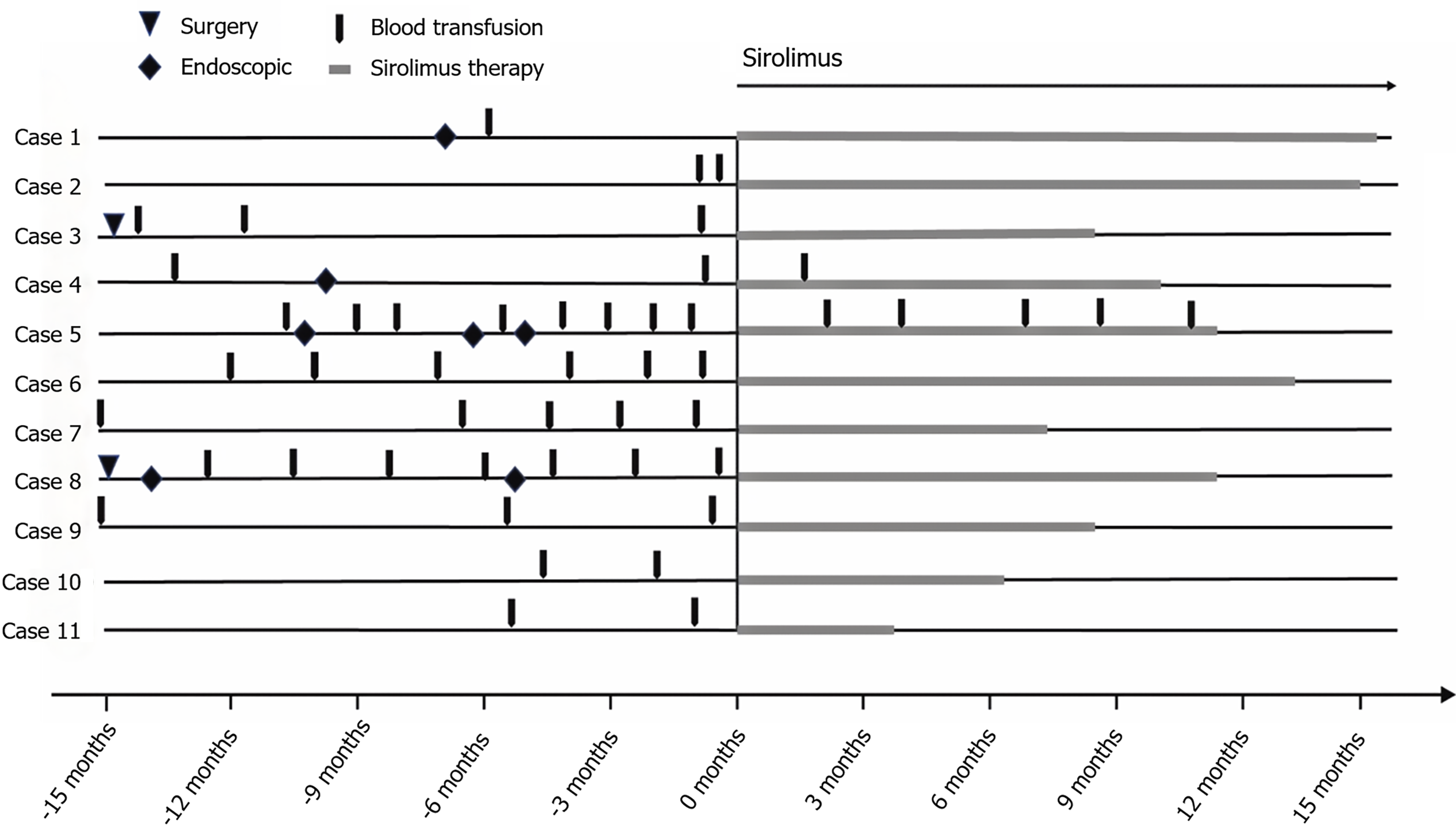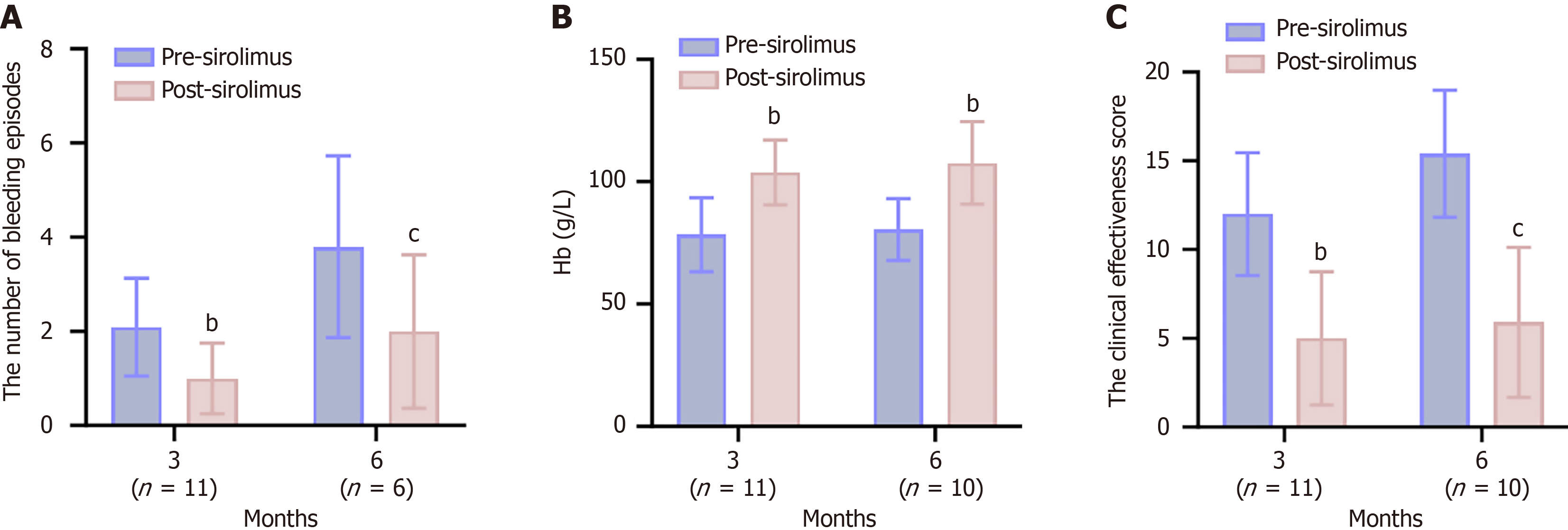Copyright
©The Author(s) 2025.
World J Gastroenterol. Jul 7, 2025; 31(25): 105677
Published online Jul 7, 2025. doi: 10.3748/wjg.v31.i25.105677
Published online Jul 7, 2025. doi: 10.3748/wjg.v31.i25.105677
Figure 1 Typical endoscopic images of intestinal angiodysplasias.
A: At 50 cm from the pylorus, multiple punctate erythemas are observed, some with blood seepage, classified as Yano-Yamamoto type 1a; B: At 150 cm from the pylorus in the jejunum, after removal of blood clots and irrigation, two sites of non-pulsatile active bleeding are visible, classified as type 1a; C: At 270 cm from the ileocecal valve, patchy erythema is observed without seepage, classified as type 1b; D: At 100 cm from the pylorus in the jejunum, active bleeding is evident; after irrigation, no pulsation is detected, and the base of the erythema is larger than 1 mm, classified as type 1b. Indicated by black arrows.
Figure 2 Schematic overview of the clinical management of patients with gastrointestinal angiodysplasias before and after sirolimus treatment.
The timelines highlight blood transfusions, endoscopic treatments, and sirolimus administration.
Figure 3 Before and after 3 months and 6 months of sirolimus administration.
A: Average bleeding episodes; B: Average hemoglobin concentration; C: The clinical effectiveness score. bP < 0.01. cP < 0.001. P were compared with pre-sirolimus. Hb: Hemoglobin.
Figure 4 Endoscopic and histopathological observations of intestinal angiodysplasias.
A: Endoscopic image showing significant patchy erythema and bleeding before sirolimus treatment; B: Endoscopic image after sirolimus treatment, revealing a significant reduction in vascular lesions; C: Histopathological image of intestinal angiodysplasias. scale bar: 100 μm.
Figure 5 Sirolimus treatment for patients with gastrointestinal angiodysplasias.
q.d.: Quaque die.
- Citation: Sun Q, Wu JC, Chen X, Li DH, Li BR, Xiao NJ, Wang XY, Tu XZ, Ning SB, Sun T. Efficacy and safety of sirolimus in the treatment of gastrointestinal angiodysplasias. World J Gastroenterol 2025; 31(25): 105677
- URL: https://www.wjgnet.com/1007-9327/full/v31/i25/105677.htm
- DOI: https://dx.doi.org/10.3748/wjg.v31.i25.105677

















